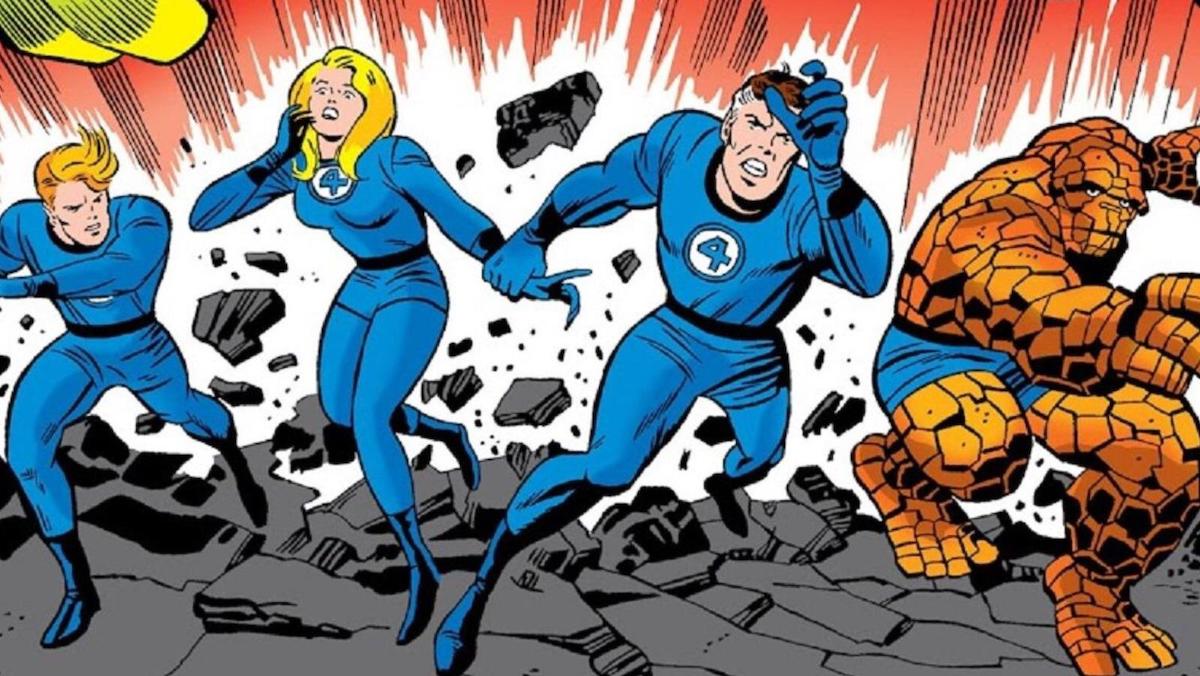The New ‘Fantastic Four’ Movie Fulfills a Pulitzer Winner’s Vision

Marvel’s new Fantastic Four movie is finally cast and moving forward! This morning, Marvel released a Valentine’s Day-themed poster showing the team gathered in a beautifully kitschy living room, with their robot sidekick H.E.R.B.I.E. serving them drinks. But the poster isn’t just adorable for its own sake. If you look closely, it appears to reveal what time period the film will take place in.
Overall, the poster has a fun, retro feel, with midcentury modern furniture and a vintage-looking art style. Look at those costumes! The random stars and confetti! H.E.R.B.I.E.’s old-timey robot design! I love it.
Those are already pretty big clues that the film won’t be taking place alongside the rest of the events in the Marvel Cinematic Universe. But, as many fans on social media have already noticed, the magazine that Ben is reading is a dead giveaway.
The magazine is an issue of Life from December 13, 1963, showing President Lyndon B. Johnson standing in the Oval Office. That makes it overwhelmingly likely that the movie is set in the early ’60s. (After all, if it’s Valentine’s Day, then the poster would be set in February 1964.)
This time period confirms one crucial fact about the movie: It takes place in a different universe than the rest of the MCU. There have already been plenty of rumors to that effect, but putting the team several decades in the past only works if they’re in a different reality. Otherwise, Marvel would have to do a lot of retconning to make it all make sense.
The Fantastic Four won’t be the first MCU film to take place in a different reality. Deadpool & Wolverine, coming out this July, takes place in the reality established by the movies produced by Fox. With Secret Wars coming up and all the realities of the multiverse colliding, Deadpool and the Fantastic Four will presumably meet up with everyone in Earth-616 at some point in the Multiverse Saga.
In the meantime, though, setting The Fantastic Four in the ’60s fulfills a vision that a Pulitzer-winning novelist pitched way back in 1995—and finally does right by the team.
Michael Chabon was right all along
In 1995, Michael Chabon—who would go on to win the Pulitzer with his novel The Amazing Adventures of Kavalier and Clay—requested a meeting to pitch his idea for a Fantastic Four film. “The first thing I want to say,” the pitch reads, “is that the Fantastic Four are not about darkness.”
“This might seem obvious but I think it’s important,” Chabon’s pitch continues. “They were conceived in another era; they have silly powers; their very name says it all.” (“Didn’t you guys chart in the ’60s?” Doctor Strange quips to an alternate Reed Richards in Doctor Strange 2.) Chabon goes on to describe a timeless, optimistic world, full of bouffant hairdos and rocket ships, a world “where radiation is not only terrifying and evil but also capable of producing wonders and miracles.” Of course, everyone knows the ’60s weren’t actually the bubbly, happy-go-lucky time period that nostalgia filters make them out to be, so any film that uses that aesthetic would need to contend with that fact.
Anyway, I don’t know how much luck other Chabons had in other realities, but we all know how the Fantastic Four film franchise went in our timeline. Chabon’s pitch didn’t go anywhere, and we got one of the worst Marvel films of all time in 2005. Luckily, Chabon did eventually get involved in genre film and TV, co-writing Spider-Man 2 and serving as showrunner for season 1 of Star Trek: Picard.
Is Chabon writing the screenplay for this iteration of The Fantastic Four? No, but even if Feige and friends didn’t have Chabon’s original idea in mind, at least they’re on the same page. It looks like we might get a Fantastic Four movie that’s bright, kitschy, and fun—and that’s exactly as it should be.
(featured image: Marvel Comics)
Have a tip we should know? [email protected]
